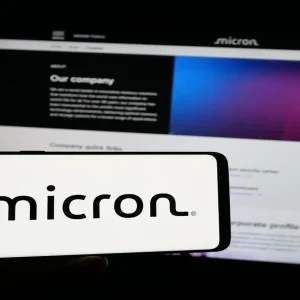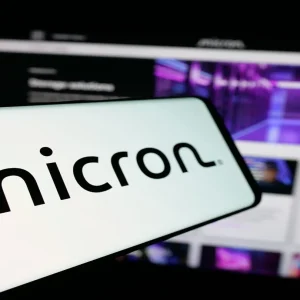
In May, Krushitha Reddy celebrated the completion of her graduate studies under the warm Arizona sun. During a two-year programme at Arizona State University (ASU), Reddy completed an array of courses in Materials Science, including ASU’s Graduate Certificate in Semiconductor Processing, and is now actively pursuing a career in the semiconductor industry. It’s a sector, she says, that “push[es] the boundaries of technological innovation” — and one that’s always seeking fresh talent.
Reddy, intentionally or not, is helping to fulfil one of President Joe Biden’s biggest ambitions. Amid rising tensions with China, Biden’s administration — like many of its global rivals — is racing to rebuild a domestic semiconductor supply chain after decades of offshoring. The global chip shortage of 2021 highlighted the fragility of this supply chain, with key industries disrupted due to a lack of crucial components. The possibility that China might invade Taiwan, by far the world’s biggest producer of leading-edge chips, is another dark cloud on the horizon.
But any country seeking to develop an independent semiconductor supply chain faces one major hurdle: they’ll need to find — or build — a highly-qualified workforce. Chipmaking, after all, is anything but straightforward. “These are some of the most sophisticated and most complex systems known to mankind,” says Professor Vijay Raghunathan of Purdue University, Indiana.

Semiconductor talent is in short supply
The US semiconductor industry is facing shortages of around 70,000 to 90,000 workers in the next few years, according to a November 2022 report by Deloitte. McKinsey, meanwhile, projects a shortfall of some 300,000 engineers and 90,000 skilled technicians by 2030. This dilemma, reports Deloitte, is equally acute in Europe — especially in the UK. The Institute of Physics and Royal Academy of Engineering warned in March that skills shortages at all levels — from school-age Physics to post-graduate engineering — pose a serious threat to the development of Britain’s independent semiconductor industry.
New chip production plants are popping up across the US — and they’ll all need specialist staff. The US is one of the earlier leaders in the field, spurred in part by the $53bn CHIPS and Science Act, which was signed in August 2022. In October 2022, Micron announced an investment of up to $100bn for a new plant in Clay, New York. In December, TSMC upped its planned $12bn investment in Arizona to $40bn — promising to make more technically advanced chips than initially proposed. Intel, meanwhile, is currently building four chip production plants, two in Arizona and two in Ohio, at a cost of $40bn.
Could specialist education help plug the talent gap? “It’s going to be an uphill battle for the Western world,” says Yang Wang, an analyst at Counterpoint Research. East Asian countries, especially Taiwan, appear, at least at present, to boast an unsurpassable advantage — offering both superior technological prowess and lower labour costs. They’ve achieved this prowess, explains Wang, by fostering long-standing collaboration between chipmaking companies and universities, developing highly-focused educational programmes that offer a direct pipeline of talent. This kind of programme could supplement the more traditional, broad-spectrum, engineering qualifications that typically offer pathways to the chip industry — offering an accelerated, highly-specialised, and practical education.
Engineering schools in the US – from community colleges to elite universities – are racing to replicate this model and revamp their curriculums, rapidly developing the kind of programmes that Reddy completed at ASU. Industrial giants, meanwhile, are fighting to establish partnerships with universities in a bid to recruit their students. Intel has launched a partnership with Ohio State University, Taiwan’s TSMC, which needs workers for several fabs it is building in Arizona, has made sizable donations to ASU, GlobalFoundries has established a partnership with Georgia Tech, while Micron has brought together more than twenty universities – including Harvard and MIT – under the Northeast University Semiconductor Network.
And it’s not just the US. In July 2022, South Korea’s Ministry of Education announced plans to ease student quotas in semiconductor-related university departments to train an additional 150,000 workers with semiconductor expertise by 2032. India, too, is trying to use universities to boost its nascent semiconductor industry. In February, the All India Council for Technical Education (AICTE), which manages the country’s numerous technical colleges, launched two specialist chipmaking training programmes in an attempt to help fulfil Prime Minister Narendra Modi’s lofty goal of training up 85,000 semiconductor professionals by 2032.
Would does specialist semiconductor education look like?
As director of semiconductor education at Purdue University, Professor Raghunathan says his primary responsibility is simply raising awareness about the sector. “The first problem that we’re trying to address is that most people don’t really see the semiconductors in the products that they use,” he explains. “People use iPhones but they don’t see that the heart and the brain of an iPhone is really the multitude of semiconductor chips that are sitting inside.”
To overcome this hurdle, Raghunathan helped launch a new first-year course at Purdue in 2022. The course, titled ‘Chips Changing the World’, featured lectures from 15 different professionals in the chip sector, aiming to offer a comprehensive overview of the vast array of roles available in the industry. “We had about 170 students in that class and that has really given us a very solid foundation,” says Raghunathan.
For those tempted to look beyond the basics of chipmaking, Purdue University also established a new interdisciplinary Semiconductor Degrees Programme in 2022 – offering a wide array of specialist options for students to gain the essential skills for the semiconductor industry. “The message we’ve been trying to give students,” says Raghunathan, “is that, no matter what your major or field, there is a role for you in the semiconductor ecosystem.”

J. Cole Smith, Dean of Syracuse University’s College of Engineering and Computer Science, has a similar outlook. Decades of offshoring have hugely dimmed the visibility of the semiconductor industry, he argues. “We now have to capture the imaginations of these young people,” says Smith. Syracuse University is part of Micron’s Northeast University Semiconductor Network, which was established to help build a workforce for the chipmaker’s new $100bn campus in Clay, New York. Students at Syracuse will get hands-on practical training in the complex arts of chipmaking and design — as well as tours of Micron’s shiny state-of-the-art facilities.
But it’s not just about elite institutions. Community colleges, for example, also have a big role to play in promoting chipmaking as a viable and desirable career path. “There’s a vast need for skilled employees and you don’t need a four-year degree in order to be very important to a company like Micron,” says Smith.
Should the UK follow in these footsteps?
The UK is also among the throngs of countries setting their sights on semiconductor security, promising to invest £1bn in the sector over the next 10 years. This investment is dwarfed by the funding available in the CHIPS and Science Act or the EU’s European Chips Act, worth €43bn. Nevertheless, says Andrew Thompson, a patent attorney at EIP specialised on semiconductors, “we’re really going for a very different strategy here”. The US and Europe are focusing on the expensive goal of onshoring manufacturing, says Thompson, while the UK has the capacity to make its mark in R&D. That means we’ll need less costly equipment, but still plenty of highly-trained talent.
Should the UK, then, be pursuing the specialist educational model mastered in Taiwan? “It seems to be a useful template to follow,” says Wang. Thompson agrees. The government’s latest strategy, he notes, does promise further outreach to promote careers in STEM, including improvements to doctoral programs and better incentives for science teachers. But it doesn’t necessarily offer anything radically new, especially on the scale that the UK truly needs: “I think a lot of it is referencing initiatives that the government had already proposed,” Thompson says.
Much of the UK’s present semiconductor education is centred on postgraduate studies – but not everyone in the industry needs this much education expertise. We might not necessarily need the highly-specific semiconductor courses offered at Purdue University and Arizona State to make a meaningful start in expanding our domestic talent, says Gaurav Gupta, a semiconductor industry analyst at Gartner. Perhaps, he says, we should keep channelling our efforts towards promoting broader education in STEM – including, and especially, in schools – just to get people through the door.
The most crucial step to plugging the talent shortage, says Gupta, might simply be making semiconductors sound exciting. “If you look at Taiwan, TSMC is the number one company so that’s where a lot of young engineers want to work. It’s the same for South Korea, where Samsung is the primary company.” But in the UK, US, and Europe, there’s huge competition for STEM talent from software giants like Google, Meta, Amazon, and Microsoft – household names that also tend to offer higher salaries than their chipmaking rivals. If governments intend to boost talent recruitment, they might need to step in to help companies “bridge that cost gap,” says Gupta – and start raising the industry’s entire profile.






